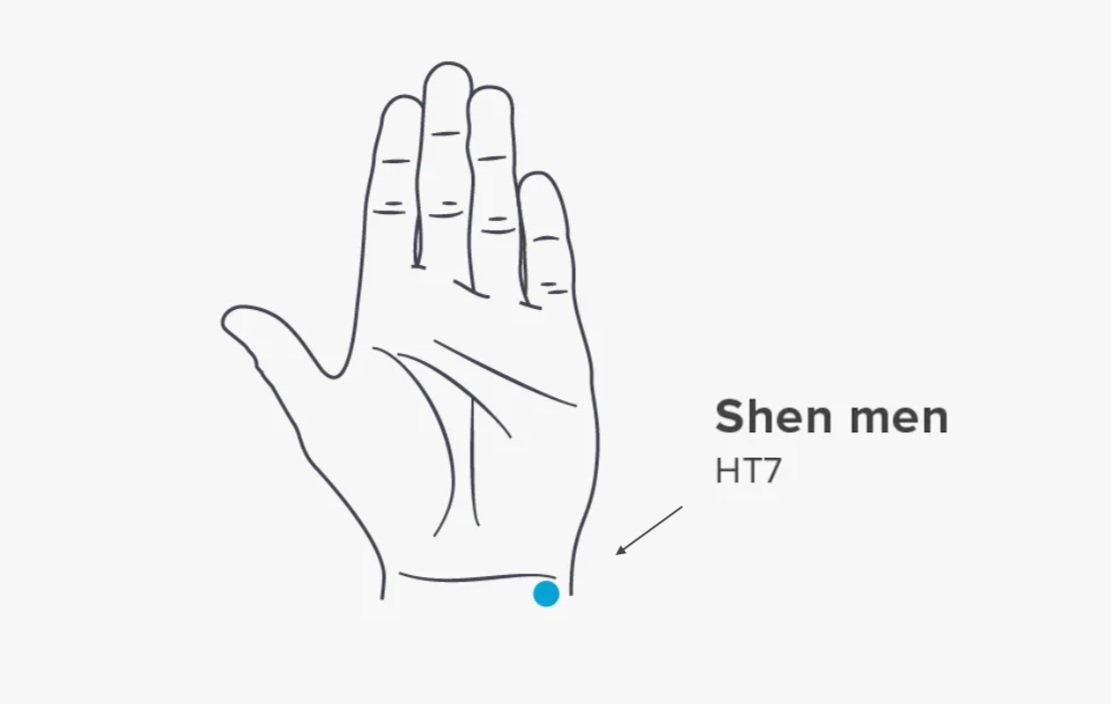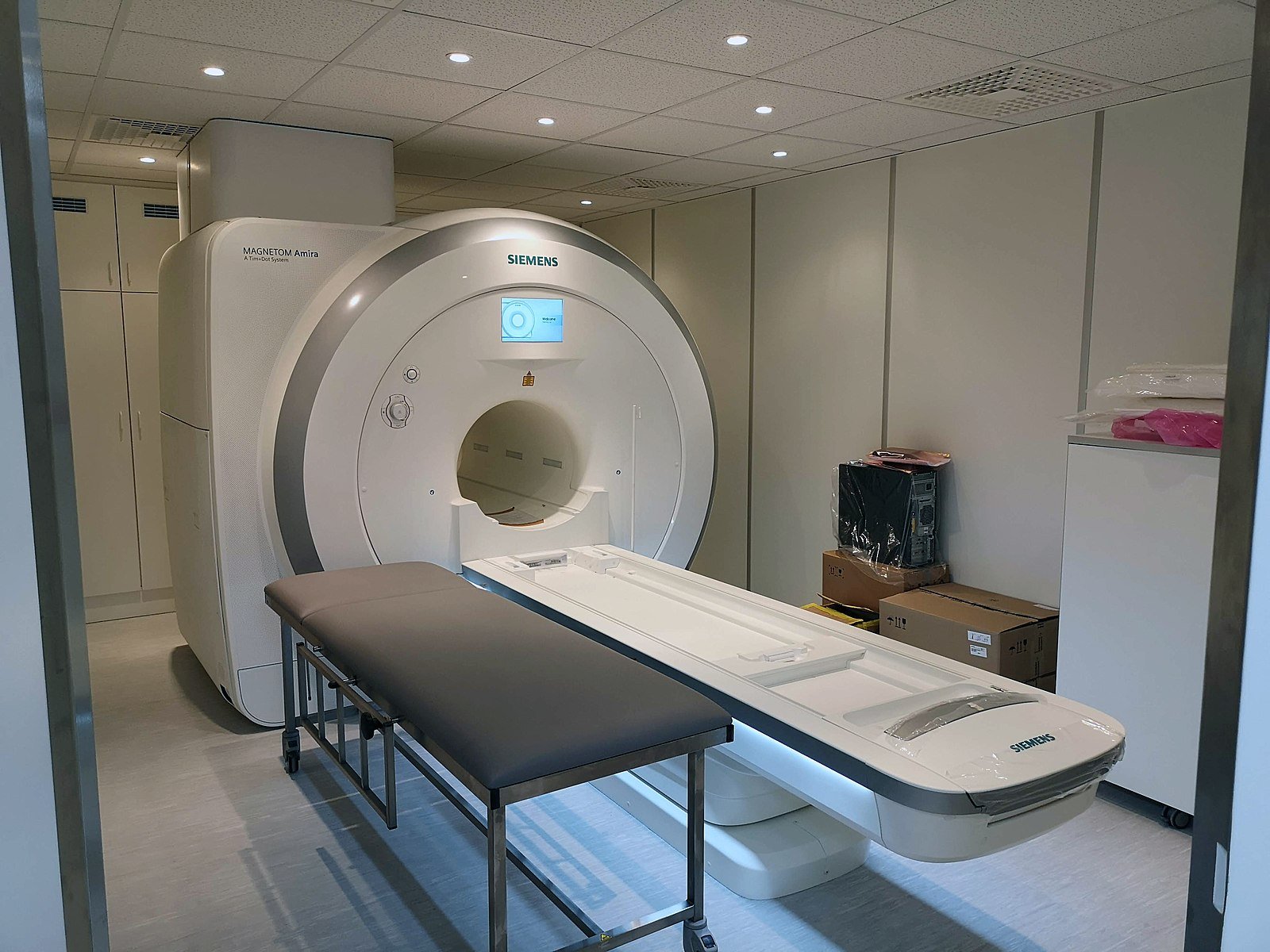How Acupuncture is Transforming Treatment for Alzheimers and Parkinsons (2024)
Alzhiemer & Parkinsons Takeaway © 2024 by HOPE Neuro-Acupuncure Rehab is licensed under CC BY-SA 4.0
Table of Contents
Introduction
In this blog, we're going to explore how acupuncture is making waves in modern medicine, particularly for neurological diseases like Alzheimer’s and Parkinson’s. We'll look at what scientists have discovered from a recent study on both humans and animals, breaking down this paper in a way that anyone can understand. For a better experience, this blog is complete with pictures and video explanations.
Ready to get started? Let's get smarter and learn about the science behind acupuncture – and don't worry, we'll leave the confusing jargon out of this! (Because let's be honest, sometimes reading a research paper feels like trying to understand an alien language)
Abstract
The abstract (summary) of this research paper covers about how diseases of the brain, like Alzheimer's and Parkinson's, happen when the nervous system (which sends messages in the body) doesn't work properly.
This can cause the buildup of wrong proteins in the brain, issues with brain chemicals, and death of brain cells. Acupuncture, an alternative medicine using needles and pressure points, is really helpful in treating these brain diseases.
This research paper looks at research and tests on people and animals that show acupuncture works well for treating Alzheimer's and Parkinson's. Acupuncture can stop bad proteins from building up in these diseases, help the brain use energy better, and prevent brain cells from dying.
Introduction to Research Paper
Neurological diseases are problems with the nervous system, which includes the brain, spinal cord, and other nerves throughout your body. Common examples are Alzheimer’s disease (AD), Parkinson’s disease (PD), ALS (a muscle weakening disease), and Frontotemporal dementia (a type of memory loss).
As people get older, the chance of getting these diseases increases. These diseases are becoming more common as the world's population ages, which is a big problem for health worldwide and costs a lot of money for patients, families, and communities.
Even though these diseases happen for different reasons, they often share problems like wrongly folded proteins in the brain, nerve cells dying, and loss of nerve connections and chemical messengers in the brain.
Acupuncture has been used for a long time in countries like China, Korea, and Japan as an additional type of medicine. It is especially helpful for diseases where nerves in the brain slowly get worse over time.
In acupuncture, a needle is put into specific points on the skin, and sometimes it’s rotated or given a small electric shock. This can help fix and improve different nerve-related diseases.
This research paper will talk about the latest research on how acupuncture helps with nerve diseases, especially Alzheimer's and Parkinson's, based on studies done on people and animals.
Alzheimer’s Disease
Alzhiemer’s Disease (AD) is currently the leading cause of dementia, accounting for 60%–80% of the total number of dementia cases (Alzheimer’s Association, 2016). AD is mainly characterized by progressive memory disorders, aphasia, agnosia, apraxia and personality degeneration.
The most important risk factor for AD is aging, and there are currently no drugs that can prevent or reverse the progression of AD. FDA-approved drugs for the treatment of AD can only ease the symptoms of AD and have many adverse effects.
Thus, a large number of AD patients are treated for memory impairment and improve their quality of life through alternative medicine. As one of the most popular alternative medicines, acupuncture is widely used in AD treatment.
Clinical evidences have shown that acupuncture can significantly improve the language and motor function and ameliorate the emotional and cognitive impairments of AD patients (Chen, 1992; Zhou et al., 2017; Kan et al., 2018).
Clinical Acupuncture Research for AD
Example #1: In China, 38 people with Alzheimer's disease (AD) got acupuncture at certain points on their bodies. After the treatment, 16 of them showed improved condition (Chen, 1992).
Example #2: A large review of 10 studies with 585 people found that acupuncture often worked better than medicines for improving their Mini Mental State Examination (MMSE) scores, which is a test for brain function. Six studies showed that acupuncture did better than drugs, and three other studies found that using acupuncture with a drug called “donepezil” worked better than just the drug alone for improving these scores. Also, the acupuncture was safe and drug-free, with very few people having side effects (Zhou et al., 2015).
Example #3: In a large study, 87 people with mild-to-moderate AD either got acupuncture three times a week or a daily drug treatment for 12 weeks. Those who got acupuncture had better scores on a test that measures brain problems than those who just got the drug. There was a noticeable improvement in their brain function by the end of the acupuncture treatment (Jia Y. et al., 2017). In another smaller study, eight people with mild-to-moderate AD who got acupuncture for 30 days showed significant improvements in their brain function, too (Kao et al., 2000; Tu et al., 2019).
Example #4: A study using brain scans (fMRI) looked at how deep and shallow acupuncture affects the brain in people with mild cognitive impairment. They found that deeper acupuncture caused stronger sensations and improved brain function more than shallow acupuncture (Bai et al., 2013; Tu et al., 2019).
Animal-Based Acupuncture Research for AD
Research with animals shows that acupuncture can help treat Alzheimer's disease (AD) in several ways. It works by slowing down the buildup of harmful proteins in the brain, stopping brain cells from dying, and helping with the brain's energy use (Cheng et al., 2008; Li et al., 2012; Lee et al., 2014; Guo et al., 2015).
Amyloid-β Protein: In AD, a big problem is the buildup of a protein called amyloid-β (Aβ) in the brain, which forms plaques. Acupuncture can reduce the production of this protein by stimulating specific points in aging mice that are used as a model for AD. By doing this, acupuncture helped with learning and memory problems in these mice (Dong et al., 2015; Jiang et al., 2019). Once again, it works even better when combined with a drug called donepezil.
Energy Metabolism: The brain needs a lot of energy, and how it uses glucose (sugar) is really important for its function. Acupuncture has been shown to improve how well rats with AD can learn and remember things by influencing these energy processes in the brain. By targeting specific points, acupuncture increases the rate of glucose use in the brain and boosts the production of energy molecules (Cui et al., 2018; Dong et al., 2015; Lu et al., 2014). It also helps with cognitive problems in AD by stimulating an acupuncture point on your wrist known as HT7 (Lai et al., 2016).
Imaging-Based Acupuncture Research for AD
In recent years, brain imaging methods like fMRI (functional Magnetic Resonance Imaging) and PET (Positron Emission Tomography) have been used a lot to study how acupuncture might help treat Alzheimer's disease (AD).
fMRI Studies:
On Healthy Participants: One fMRI study found that doing acupuncture at a point called HT7 in healthy young people activated important brain areas related to thinking and decision-making (Chen et al., 2008).
On AD Patients: In patients with AD, there's usually less blood flow in the brain. Acupuncture at HT7 increased this blood flow in AD rats, as shown in an fMRI study. Another PET study using a tracer called 18F-fludeoxyglucose (FDG) found that acupuncture at HT7 improved how the brain uses glucose in key areas like the hippocampus, thalamus, hypothalamus, and frontal/temporal lobes in AD rats (Lai et al., 2016).
Electro-Acupuncture (EA) Studies: An fMRI study showed that electro-acupuncture (using electrical stimulation along with acupuncture) at a point called GV 20 changed blood flow in brain regions linked to thinking and emotions in healthy people. These changes were observed in areas like the orbital frontal cortex and middle cingulate cortex. After acupuncture at GV 20, several brain regions important in AD showed increased connectivity (Yu et al., 2019; Zhang et al., 2013).
ST 36 Acupuncture Point Study: Another fMRI study demonstrated that stimulating the ST 36 acupuncture point could change brain activity in areas involved in cognition in healthy people. In AD rats, acupuncture at ST 36 increased glucose metabolism in various parts of the brain, suggesting improved brain function (Nierhaus et al., 2015; Lu et al., 2017).
Parkinson’s Disease
Parkinson's Disease (PD) is the most common disorder that affects how people move. It starts slowly and gets worse over time, making it hard for people to control their muscles.
Source: National Institute of Environmental Health Sciences
The main problem in PD is that certain brain cells, called dopaminergic neurons, start to die. These cells are in a part of the brain called the substantia nigra. When they die, they make less dopamine, a chemical that helps control movement. This lack of dopamine leads to the movement problems seen in PD. The reasons why these cells die can be different for each person, but they might include things in the environment, issues with the body's defense system, problems in the cells' powerhouses (mitochondria), or damage from harmful molecules (oxidative stress).
Treatment Options: For treating PD, not all therapies involve medicine. Some non-drug treatments can help lessen the symptoms and make life better for people with PD. About 40% of people with PD try at least one type of alternative treatment (such as acupuncture). Acupuncture is one of the top three non-drug treatments chosen by people with PD (Rajendran et al., 2001; Dong et al., 2016).
Clinical Acupuncture Research on PD
Combined Treatment with Western Medicine: A study by Chen et al. (2015) showed that when acupuncture is used along with Western medicine, it helps reduce various PD symptoms. These include problems with thinking, behavior, mood, side effects of other treatments, and depression. The benefits were seen both in short-term (18 weeks) and long-term (36 weeks) treatments.
Improvement in Movement: In another study, researchers found that after 3 weeks of electro-acupuncture (EA) treatment, PD patients walked better (Lei et al., 2016). Other reports have shown that acupuncture can help with other PD-related problems like urinary issues, tiredness, stiffness, balance problems, delayed swallowing reflex, and sleep issues.
Mixed Results in Some Studies: However, some studies suggest that the benefits of acupuncture for PD might not be very strong. They think that the studies might not have been done well enough to make clear conclusions, and the improvements seen might be due to general effects rather than specific ones related to acupuncture (Cristian et al., 2005; Lee et al., 2013).
Acupuncture Points and Depression in PD: In a six-month study, using specific acupuncture points improved scores on a depression inventory and a PD questionnaire, though some motor scores got worse (Eng et al., 2006). Another large review of 11 studies with 831 people found that acupuncture, when used with a drug called Madopar, was better than the drug alone for PD. It helped with mental symptoms and side effects of PD treatments but didn’t greatly reduce involuntary movements.
Animal-Based Acupuncture Research on PD
Researchers have done many studies using animals to understand how acupuncture can help treat Parkinson's Disease (PD). They use certain chemicals to create PD-like conditions in animals and then test acupuncture treatments.
Effects on Brain Chemicals:
Improving Movement and Brain Chemistry: Studies have shown that electro-acupuncture (EA) can improve movement and increase the availability of dopamine, an important brain chemical, in mice with PD-like conditions (Yu et al., 2016; Wang et al., 2018).
Enhancing Memory and Brain Cell Health: Laser acupuncture was found to improve memory and brain cell health in certain parts of the brain in rats with PD-like symptoms (Wattanathorn and Sutalangka, 2014).
Proteins and Genomics in PD: Recent studies using protein analysis have shown that EA can affect many proteins in the brain that are involved in PD, helping to balance brain chemicals and protect brain cells (Li M. et al., 2017).
Neuronal Survival and Acupuncture:
Activating Survival Pathways: EA activates certain pathways in the brain that help brain cells survive, especially in the part of the brain affected by PD (Li M. et al., 2017).
Increasing Dopamine Neuron Survival: Acupuncture has been shown to increase the survival of dopamine-producing neurons in animal models of PD (Lee et al., 2018; Park et al., 2017).
Effect on Brain Receptors and Genes: EA has also been found to improve the expression of certain receptors and genes in the brain that play a critical role in the development of PD (Jia Y. J. et al., 2017; Yeo et al., 2015).
Mixed Results in Studies: While many studies suggest acupuncture is effective in animal models of PD, the results vary. For example, one study found that acupuncture did not reduce certain types of neuron death in a PD animal model (Yang et al., 2017).
Acupuncture and α-Synuclein Protein: Stimulating specific acupuncture points has been shown to help clear a protein called α-synuclein, which builds up in the brains of PD patients (Tian et al., 2016).
Reducing Brain Inflammation: EA has also been effective in reducing brain inflammation and improving movement in mice with PD-like symptoms. Bee venom acupuncture showed similar effects in reducing inflammation (Deng et al., 2015; Khalil et al., 2015).
A review of 57 articles suggested that acupuncture might be effective for PD in animal models, but more evidence is needed to confirm these findings (Lee et al., 2016).
Imaging-Based Acupuncture Research on PD
Levodopa and Scalp Electro-Acupuncture Study: In a 5-week clinical trial, a group that received both levodopa (a common PD medication) and scalp electro-acupuncture (EA) showed a significant increase in regional cerebral blood flow (rCBF). This was measured using a type of brain imaging called single photon emission computed tomography (SPECT) with specific tracers (Huang et al., 2010).
fMRI Studies on Acupuncture's Impact on Brain Function:
Observing Brain Function Changes: Chae et al. (2009) used fMRI to watch how the brain functioned after acupuncture at a point called GB34 Yang ling quan. They looked at the blood-oxygen-level dependent (BOLD) signal, which helps show how active different parts of the brain are. The study suggested that acupuncture might help improve movement in PD patients by affecting a brain pathway that's important for controlling movement.
Increased Neural Responses: Another study by Yeo et al. (2014) found that acupuncture increased the activity in several brain areas, including the substantia nigra (SN), caudate, thalamus, and putamen. These areas are crucial in PD.
Effects of EA on Neuronal Activity in PD Monkeys: A study used pharmacological MRI (phMRI) to observe changes in brain activity in monkeys with PD-like symptoms. The researchers found that EA treatment changed the activity in several brain areas important for movement, like the striatum and primary motor cortex (Zhang et al., 2018).
Conclusion
This concludes our easy-to-understand translation of a recent, well-cited research paper on the effectiveness of acupuncture.
For more information on acupressure and holistic healing, explore our sections on Traditional Chinese Medicine (TCM), Physical Therapy, and Sport Medicine. Your holistic health journey is just beginning, and there's a wealth of knowledge and support waiting for you.
Testimonials from athletes and patients who have experienced the benefits of sports acupuncture can be read in our Testimonials section.
Want to experience the amazing benefits of sports acupuncture? Come to our clinic in San Jose, California!










